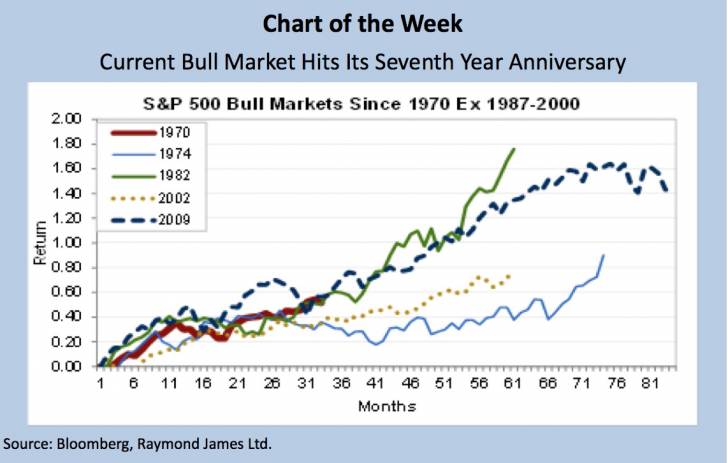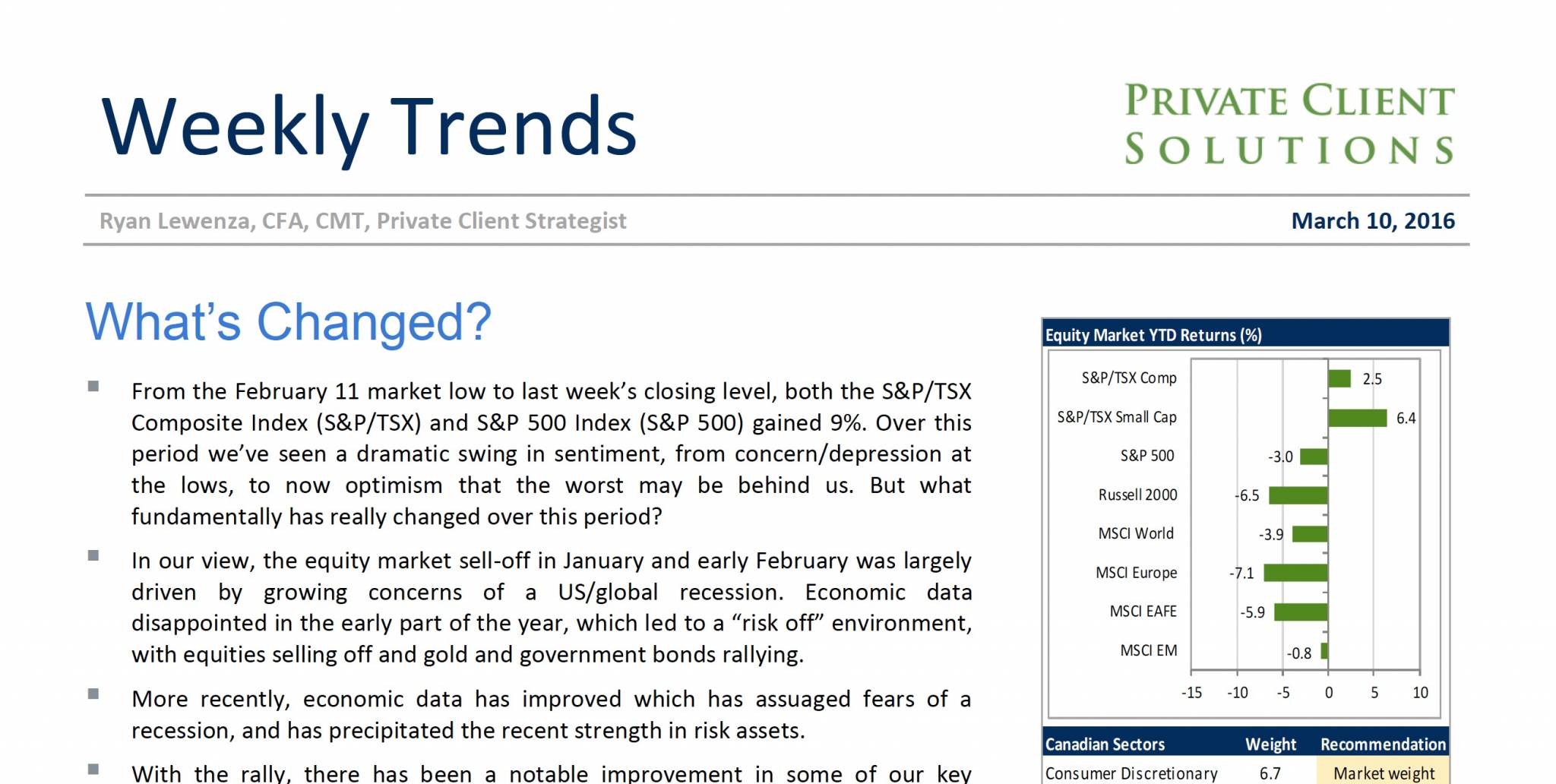What’s Changed?
by Ryan Lewenza, CFA, CMT, Private Client Strategist, Raymond James
• From the February 11 market low to last week’s closing level, both the S&P/TSX Composite Index (S&P/TSX) and S&P 500 Index (S&P 500) gained 9%. Over this period we’ve seen a dramatic swing in sentiment, from concern/depression at the lows, to now optimism that the worst may be behind us. But what fundamentally has really changed over this period?
• In our view, the equity market sell-off in January and early February was largely driven by growing concerns of a US/global recession. Economic data disappointed in the early part of the year, which led to a “risk off” environment, with equities selling off and gold and government bonds rallying.
• More recently, economic data has improved which has assuaged fears of a recession, and has precipitated the recent strength in risk assets.
• With the rally, there has been a notable improvement in some of our key technical and market indicators. They include: 1) the S&P 500 breaking above its 50-day moving average (MA); 2) a new Dow Theory “buy signal”; 3) cyclical sectors are outperforming; and 4) credit spreads have narrowed.
• Our base case view remains that the US/global economy will not endure a recession, and that equities will post positive returns this year. However, there remain a number of risks to the global economy and stock market that we need to monitor closely.

Read/Download the complete report below:















